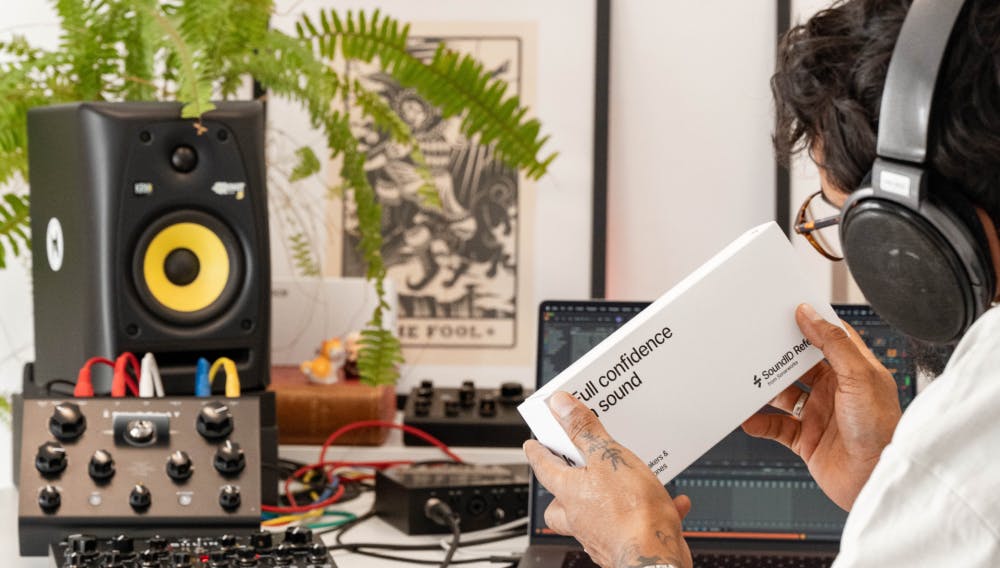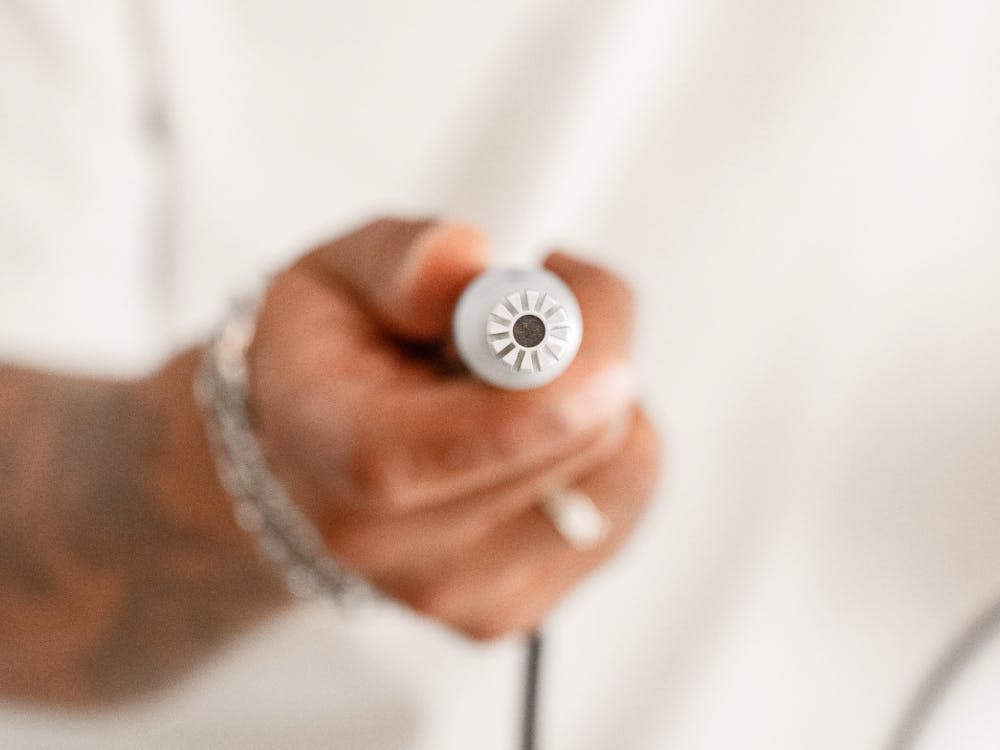Introduction: Studio Monitor Calibration Has Become Essential
As music production standards continue to evolve — with immersive audio, hybrid studios, and remote collaboration becoming the norm — professional creators are under more pressure than ever to deliver accurate, consistent mixes. Yet one of the most overlooked culprits behind poor translation and endless revisions is right in front of us: uncalibrated monitoring environments.
This article expands on the key ideas from Sonarworks’ video “Why Monitor Calibration Matters”, exploring how monitor calibration directly addresses common pain points in audio production. We’ll ground those insights with real-world use cases and industry data so you understand why calibration isn’t just a technical upgrade – it’s a creative enabler. It’s important to note that studio monitor calibration doesn’t replace room acoustics or high-quality speakers — it works alongside them to create a monitoring chain you can fully trust for accurate mixes.
Watch the full “Why Monitor Calibration Matters” video to see detailed demonstrations of how uncalibrated monitors introduce misleading frequency content, and how SoundID Reference solves it in real time., frequency response issues, and why even top-tier speakers can mislead you without calibration.
Why So Many Creators Still Mix Blind
Despite years of advances in speaker technology and room treatment, the problem persists: audio professionals are still making critical decisions based on flawed monitoring environments.
Common problems include:
- Bass buildup and phase masking: Especially in small rooms, causing misjudged low-end.
- Unreliable stereo image: Uneven reflections and asymmetrical walls distort imaging.
- Inconsistent frequency response: Making your mix sound different on every playback device.
So in a real world, a producer working in a 3x4m untreated room with KRK monitors may see a ±10dB swing at 60–120Hz, meaning their bass decisions are essentially random without calibration.
The video shows how untreated spaces, even with premium monitor,s yield distorted frequency responses that trick your ears. Calibration solves this by neutralizing your room’s coloration. For an in-depth example of how even visually symmetrical rooms can introduce sonic imbalances, watch this analysis on room asymmetry and acoustic issues.
What the Research Shows: Calibration Solves Real-World Pain Points
Fewer Revisions, Faster Approval Cycles
According to Sonarworks’ internal user data, calibrated environments result in fewer revision requests and faster mix approvals. For commercial engineers, this translates directly into better client satisfaction and faster turnaround times.
Calibration Adoption Is Now the Norm
A 2024 Sound On Sound survey of over 700 professional engineers found that 74% use monitor calibration tools regularly – a huge shift from just a few years ago. Calibration has become a foundational part of modern workflows. Also, the AES Technical Document TD1008 (2023) highlights that monitoring accuracy is the single most important factor influencing the reliability of mix decisions, reinforcing why calibration is now considered a baseline requirement in professional environments.
Better Focus, Less Fatigue
A 2022 AES whitepaper on psychoacoustics concluded that calibrated rooms reduce cognitive load and ear fatigue. For creators working long hours, especially on immersive formats, this is essential.

How SoundID Reference Solves These Production Problems
SoundID Reference is more than a plugin — it’s a studio optimization tool that empowers you to make trusted decisions faster. As shown in the video, the software corrects both speaker and headphone monitoring chains, allowing you to mix with total confidence — it’s a studio optimization tool that empowers you to make trusted decisions, faster.
Pain Point 1: “My Low End Never Translates”
Solution: SoundID Reference uses in-room measurements to compensate for bass buildup and nulls, letting you dial in low-end balance with confidence.
Pain Point 2: “I Lose Track of Vocal Presence”
Solution: Calibrated midrange response ensures vocals stay consistent and upfront, regardless of the playback system.
Pain Point 3: “I Don’t Know How My Mix Will Translate Across Devices”
Solution: Use the Virtual Monitoring Add-on and Translation Check to simulate playback environments like phones, laptops, car stereos, or club systems — all from your desk.
Pain Point 4: “My Headphones Sound Completely Different Than My Monitors”
Solution: With over 500 supported headphone profiles, SoundID Reference aligns headphone and speaker monitoring, ideal for mobile producers and hybrid workflows.
Real-World Use Cases: Who’s Using It and Why
For additional real-world insights and listening examples, watch the SoundID Reference deep-dive video where calibration is applied across different listening scenarios, including comparisons with and without correction.
- Dolby Atmos Engineers calibrate multichannel setups up to 9.1.6 to maintain spatial accuracy. Dolby’s own guidelines for immersive audio production emphasize that precise calibration across all channels is critical to preserving spatial accuracy, particularly in 7.1.4 and 9.1.6 room configurations.
- Voiceover & Podcast Editors depend on flat midrange to avoid vocal coloration.
- Home Studio Producers gain translation confidence without needing expensive treatment.
- Post-Production Teams share calibration profiles to keep remote workflows consistent.
SoundID Reference supports both plugin and system-wide modes — making it DAW-agnostic and perfect for reference listening outside the session.

Your 4-Step Action Plan for Better Monitoring
Step 1: Measure Your Room
Use a Sonarworks measurement mic (or any reference mic) at your listening position. Pro Tip: Measure at least 7 mic positions, not just the sweet spot – this averages out anomalies and produces a more reliable correction curve.
Step 2: Generate Your Correction Curve
Let SoundID Reference analyze your response and apply a neutral target curve. Pro Tip: If you work in multiple genres, save alternate target curves (e.g., flat for mixing, slightly enhanced low end for producing) so you can switch quickly without recalibrating.
Step 3: Mix with Confidence
Enable calibration in your DAW or system-wide to ensure your monitoring is consistent. Pro Tip: Toggle calibration on/off occasionally to train your ear – you’ll quickly notice how much coloration your untreated room adds.
Step 4: Translation Check
Preview how your mix will sound in real-life environments and fix problems before delivery. Pro Tip: Translation Check includes earbuds, car stereos, and gaming headsets – don’t skip these if you produce for TikTok, Twitch, or other mobile-first platforms.
Final Thoughts: Calibration Is the Competitive Edge
In 2025, audio professionals can’t afford to guess. Monitor calibration isn’t just a way to improve your sound; it’s a business-critical solution for delivering consistent results, reducing revisions, and creating client trust. Calibration isn’t about making everything sound flat – it’s about giving your creative instincts a trustworthy canvas. Whether you choose SoundID Reference or another tool, the principle is the same: accurate monitoring unlocks faster, better mixes.
Start your free 21-day trial of SoundID Reference
Get started here →
Bonus → Monitor Calibration FAQ
Do expensive monitors still need calibration?
Yes. Even the most meticulously engineered monitors must contend with the acoustic realities of your room. A premium monitor’s flat response is measured in anechoic conditions, but once it’s placed in a real space, interactions with walls and furniture create peaks and nulls that no cabinet design can prevent. Calibration software corrects these room-induced frequency anomalies, giving you a trustworthy reference that honors the monitor’s capabilities. Standards from the AES (TD1008) and ITU (BS.1116) underscore that controlled, calibrated monitoring is essential for reliable mix decisions in both stereo and immersive formats.
Is monitor calibration necessary in Dolby Atmos studios?
Absolutely. Spatial audio formats demand consistent frequency, phase, and level balance across many channels. Dolby’s technical guidelines highlight that even small deviations between speakers can collapse the immersive image. Calibration aligns the entire array, whether 7.1.4 or 9.1.6, so you can accurately position objects in the sound field. Large rooms introduce additional challenges such as room modes and extended reverb times, which limit how much software correction can achieve; in such cases, calibration is still vital but must be paired with thoughtful speaker placement and acoustic treatment.
What’s the difference between room treatment and monitor calibration?
They address different parts of the same problem. Room treatment uses absorbers, diffusers, and bass traps to control reflections, standing waves, and flutter echoes – acoustic issues that no EQ can truly solve. Monitor calibration applies digital correction to compensate for frequency-response irregularities at the listening position, giving you a neutral reference even in imperfect rooms. Proper speaker placement and a bit of treatment (e.g., bass traps and first-reflection panels) give calibration software a clean slate to work from, ensuring more accurate results.
Can calibration fix bad speakers?
Calibration can refine a speaker’s response, but it can’t overcome fundamental design flaws. If your monitors distort, have poor off-axis response, or lack low-end extension, calibration won’t make those weaknesses disappear. What it does excel at is smoothing peaks and dips caused by the room and aligning both speakers to the same tonal baseline. Think of calibration as the final adjustment in a chain that starts with choosing capable monitors and treating obvious room problems.
Does monitor calibration affect latency?
Modern calibration systems introduce minimal latency, typically 2–5 ms, because they apply linear-phase filters in real time. This delay is negligible for mixing and mastering. If you’re tracking live instruments and need near-zero latency, most software offers a “minimal latency” mode that uses gentler filters. You’ll still benefit from improved frequency balance without noticeable timing issues.
Do I need to recalibrate if I move my monitors?
Yes. Even small changes in speaker or listener position alter how sound interacts with the room, creating different peaks and nulls. A repositioned monitor or a new desk can shift low‑frequency modes and reflection points. Whenever you move furniture, change your seating position, or switch rooms, rerun your calibration for the most accurate results. A quick measurement session restores the reliability of your monitoring chain.
How often should I recalibrate my studio?
At minimum, calibrate when you set up a new system or significantly change your room. Beyond that, a biannual check-up is prudent – especially if your environment sees seasonal humidity changes that affect speaker cones or if you frequently move gear around. For mission-critical work (film dubbing, broadcast), some engineers recalibrate every quarter or before major projects. Calibration isn’t a one‑time task; it’s part of ongoing studio maintenance that ensures what you hear remains true to your mixes.
Does monitor calibration improve translation across devices?
Yes. The core purpose of calibration is to give you a neutral reference so you can trust that mix decisions made on your monitors will hold up elsewhere. By flattening the response curve and aligning stereo or multi-channel output, calibration reduces guesswork and helps your mixes sound consistent on car speakers, earbuds, soundbars, and club systems. Pair calibration with occasional translation checks, listening on consumer devices, to hone your mix judgment.
Keep watching and learning →
Why Your Mixes Don’t Translate To Other Devices
What Is Headphone Calibration And Why Is It Important?
What Is A Speaker And Room Calibration And Why Is It Important?





